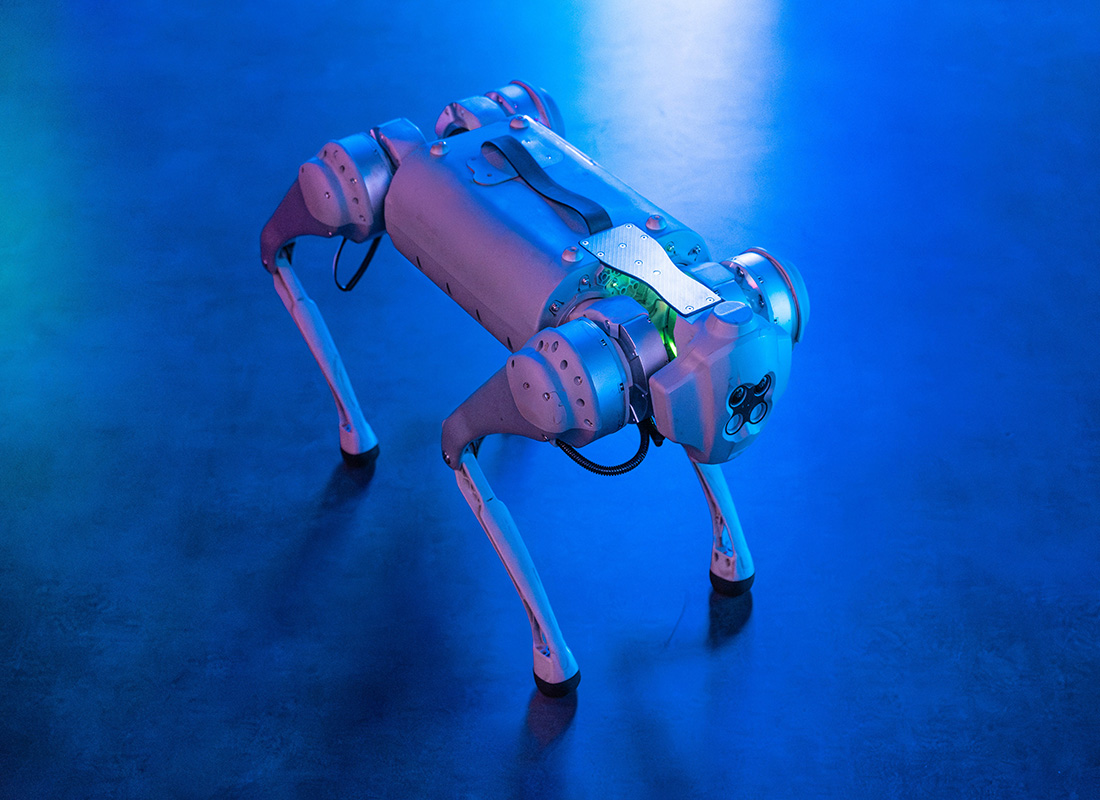Inspired by the first ever digital art show Cybernetic Serendipity, which was held in the Institute of Contemporary Arts in the summer of 1968, the Computer Arts Society was formed in September of 1968.
In the spring and summer of 1969, they held their first ever exhibition of digital art at the Royal College of Art (RCA), called simply ‘EVENT ONE’.
A watershed in artistic expression
The event took computers away from the logical, mathematical sphere and into a whole new esoteric world, where programming and memory became an extension of the human consciousness. No longer a machine for binary rights or wrongs, it became a modern canvas on which to explore the arts. Not just 2D or 3D art, or as a replacement for traditional artistic media, the computer became an extension or a different lens through which to see the future of art.
In the catalogue explanation of the aims of EVENT ONE, architect R. John Lansdown writes: ‘We cannot return to the days of handmade goods. But we can now, with computers, reverse the tendency for mechanisation to mean standardisation. It will be an important function of the society to see that this happens. In architecture, for example, it should no longer be necessary to design estates of identical houses or blocks of identical flats; unlimited variety within standard shells and with standard modules is possible. It needs more work than the easy way, but computers can do that work.’
A breath-taking mix of new and traditional
The original catalogue of the event is a mix of modern arts, dance, theatre, poetry and music ‘computer influenced’ performances, alongside a Bauhaus-style amalgamation of arts in architecture and science. The blinking green screens of early, mass-produced computers mix with classical training and bohemian experimentation to produce a show that was ground-breaking at the time and today occupies a special place in the V&A Museum.
Graham Diprose, joint chair of Electronic Visualisation and the Arts (an annual conference supported and sponsored by the Computer Arts Society), explains how Event One was re-evaluated and drove the idea for EVENT TWO: ‘We were invited by the V&A to a day conference which was looking at some of the Computer Arts Society’s earliest work.
Douglas Dodds, who is their senior curator of Digital Art, was there, as was Jasia Reichardt who was the 1968 curator of Cybernetic Serendipity where it all started. George Mallen, who has remained on our EVA committee and was one of the founders of the Computer Arts Society, was present too. So, during one of the conference breaks, I said: ‘We should do this again.’
The creation of EVENT TWO
‘We already had Gareth Polmeer from the Royal College of Art on our organising committee at EVA London. We’d been doing some symposiums previously as part of the conference with the Pratt Institute New York and the RCA. So, it was very easy to go to him and suggest the idea, which started out as a one evening pop-up exhibition. But the idea soon grew.’
Understandably, the form EVENT TWO needed to take was to be respectful and reverent of the first event, but also needed to reflect how far the society has come in its 50 years. Both the computer and creative landscapes have changed almost beyond recognition. EVENT TWO needed to be a celebration of that journey and of the artists who have moulded the society over the last half century from 1969 to the present day.
Graham continues: ‘What we really wanted was to showcase the Computer Arts Society the way it was 50 years ago, with some of the people who are still around today. There are also some very good contemporary digital artists who are also members of Computer Arts Society as well. Bringing the event right up to date, we wanted to look at two other aspects.
One is the Lumen prize - the biggest prize in digital art in the world, which attracts entrants across the globe - so there was a sort of international context for everything we were doing. And then FLUX, which is a wonderful new community of mainly London-based digital artists. It started out on Facebook as a little community of 50 digital artists two-and-a-half years ago and it now has 2,000+ on Facebook.’
Inspired by the past, looking to the future
Just as technology flies into the future in leaps and bounds, so the Computer Arts Society wanted to convey that movement and change. Graham continues: ‘We wanted more young people to be part of the society. By including Lumen and Flex we changed our demographics in one fell swoop. Instead of being full of aged, white-haired old men there are now people of all genders, faiths and everything else running around together and it’s been absolutely brilliant. They are very keen to be part of it. So, that plugged us into an instant younger audience who want to do things and be involved.’
So, after 50 years, EVENT TWO will mark the 50th anniversary of the first exhibition by the Computer Arts Society. Taking place on Tuesday 16 July, the 50th anniversary is a celebration not only of this BCS specialist group, but also a celebration of excellence within the digital arts.
Graham explains: ‘One of the things that we are looking to do is not only to have evenings where we invite people in, so FLUX will have an evening party of their own, Lumen Prize will have an evening party of their own. The main opening event is mainly a Computer Arts Society evening so that will really be looking backwards and forwards. But, we also want to work with the Royal College of Art at doing enhancements for their students. To thank RCA students for allowing us to take over their galleries, we will allow them to go down to the V&A and go in the print room and look at all the Computer Arts Society originals that they hold and things like that. We’re going to do a little souvenir tabloid-type paper called ‘EVENT ONE to EVENT TWO.’
A true celebration of 50 years of CAS
The programme for the event has not yet been published, but is thought to include work from some of the founding members of the Computer Arts Society; FLUX will have about 15 or 20 of their selected artists and the Lumen Prize will have a gala evening of their own with a panel of eminent people from all over the world.
The society also hopes to welcome Jasia Reichardt, curator of the first digital arts exhibition in London Cybernetic Serendipity and Douglas Dodds Senior Curator in the V&A's Word & Image Department, as well as Nick Lambert, a computer art historian. There will also be a mini-conference called Research in Education which will invite some of London’s top digital arts colleges to display their post-graduate students’ work.
Will Event Two be all about electronic creation, or will there be some human performances? Graham continues: ‘We are certainly going to put some performance pieces in there, but there maybe a few more health and safety constraints now at the Royal College of Art than there was 50 years ago. It’s something we’ll be negotiating with them over the next few days and weeks. EVA London has always been to do with music and performance and all sorts of different aspects right the way through, so yes, we want to reflect that as much as we possibly can within the limits of what we can construct and destruct in the time available.’
...And what of EVENT THREE?
On being asked if there will be an EVENT THREE, circa 2069, Graham replies: ‘I shan’t be here, but I have already told young Aphra at FLUX, who is 30-year-old, that she is absolutely signed, sealed and delivered for it or I’ll come back to haunt her.’

















